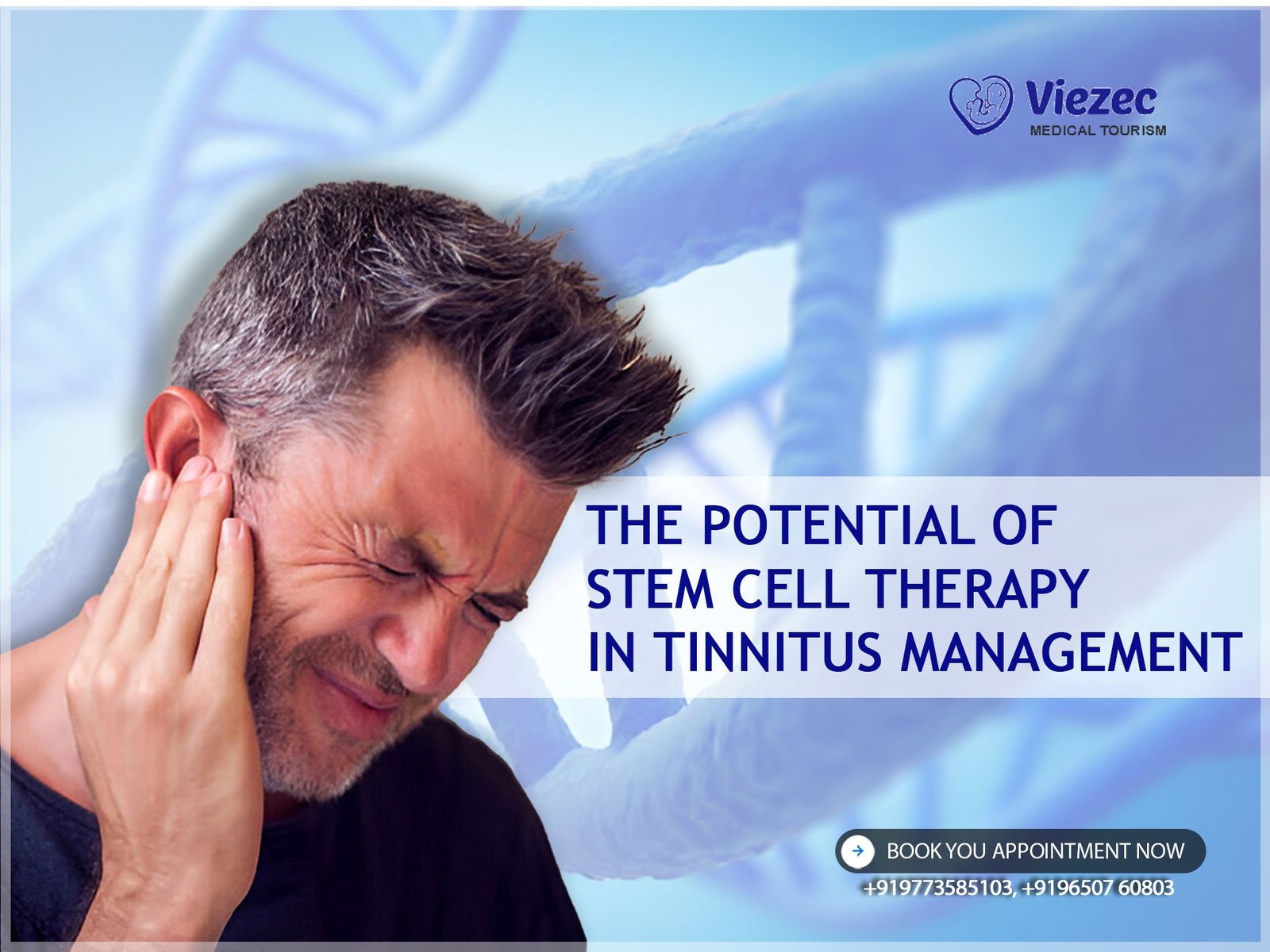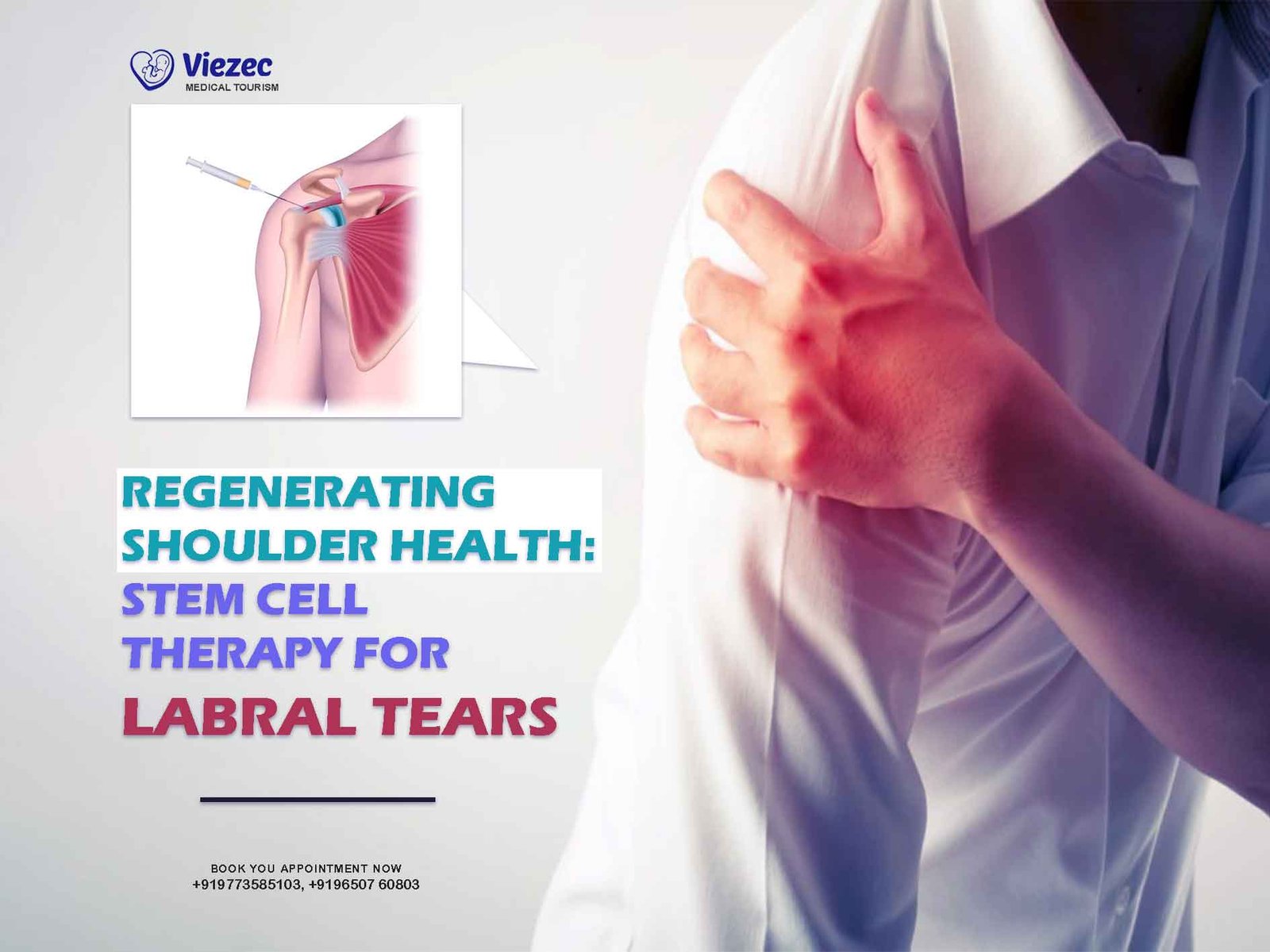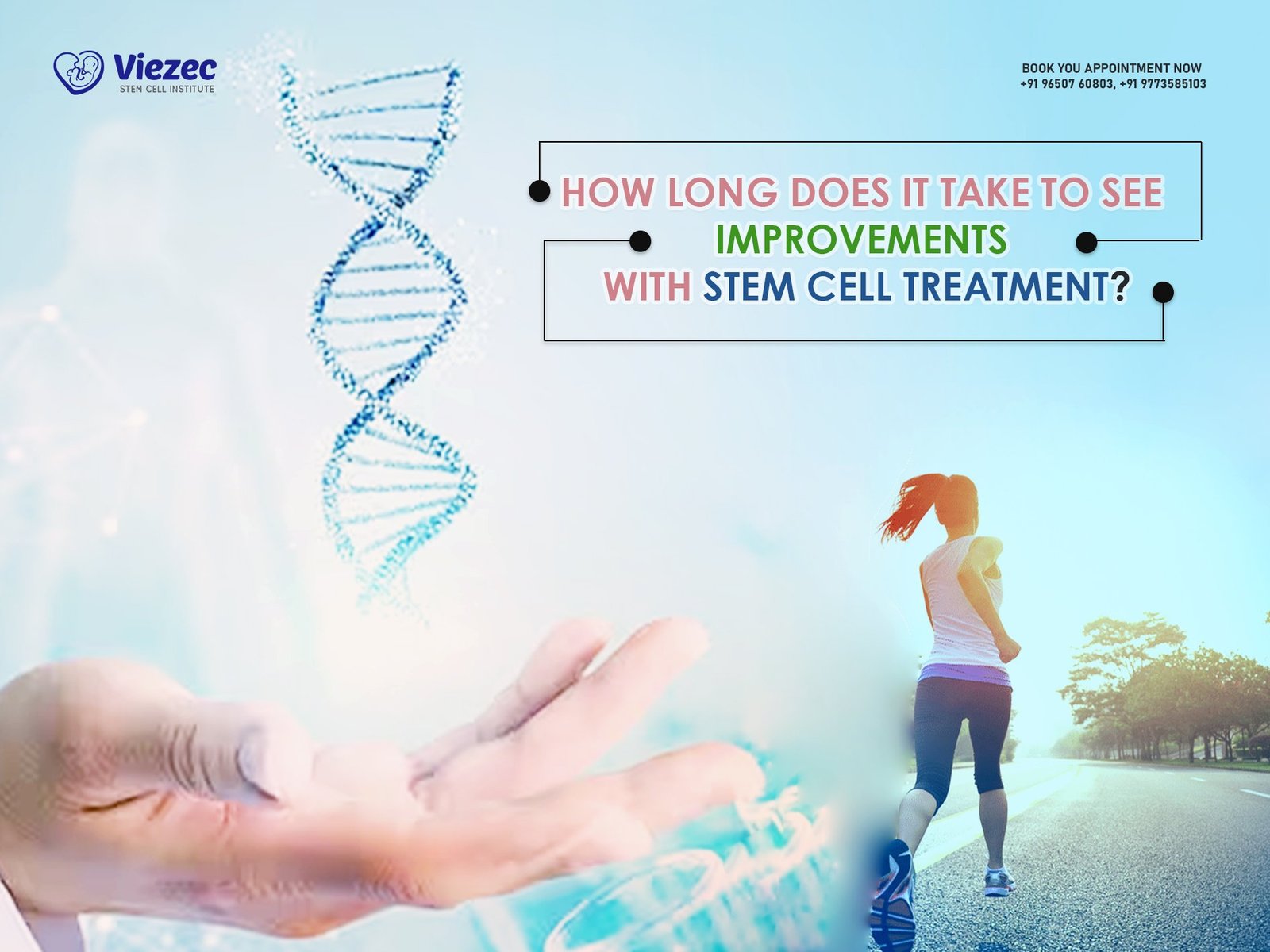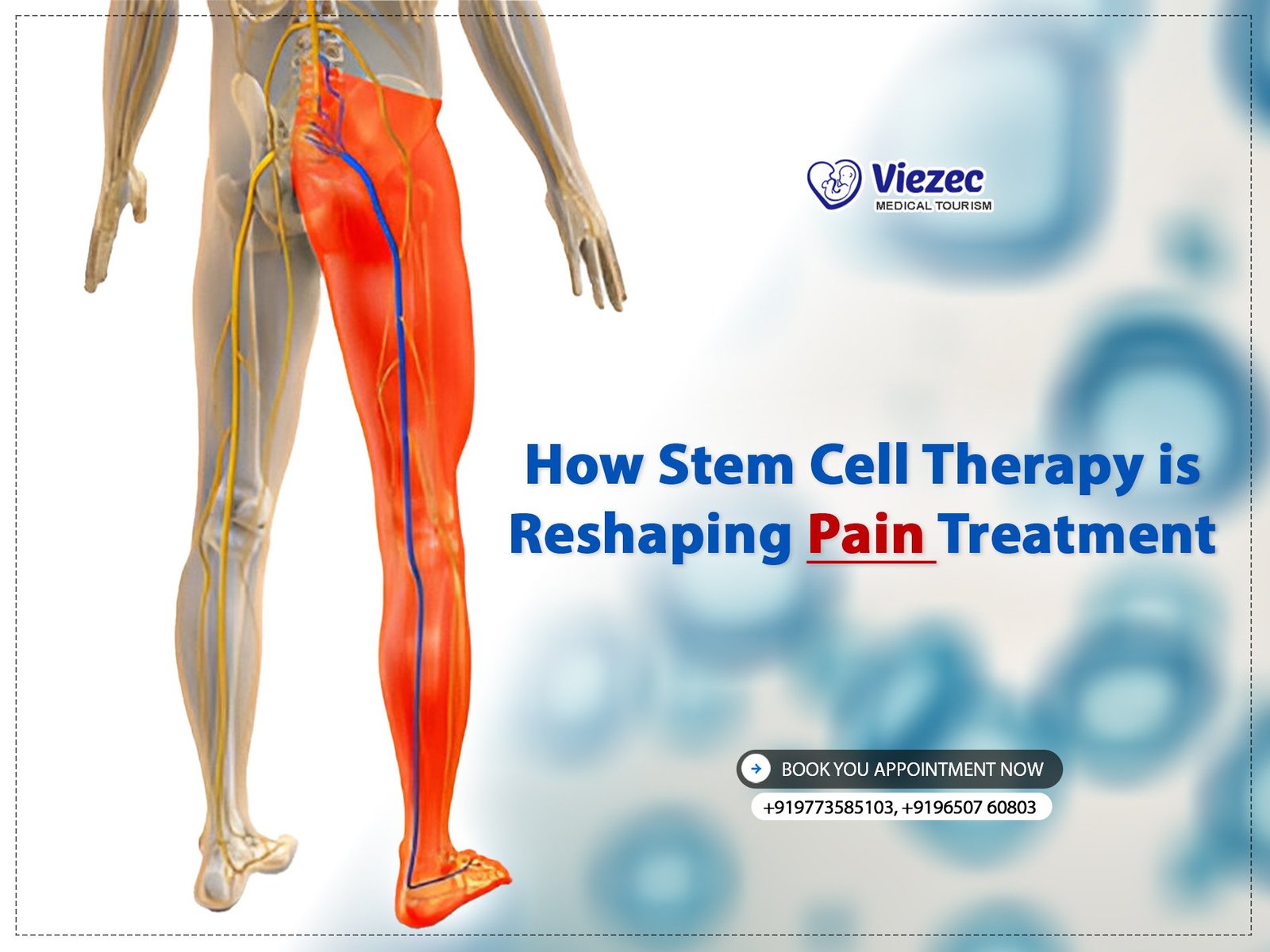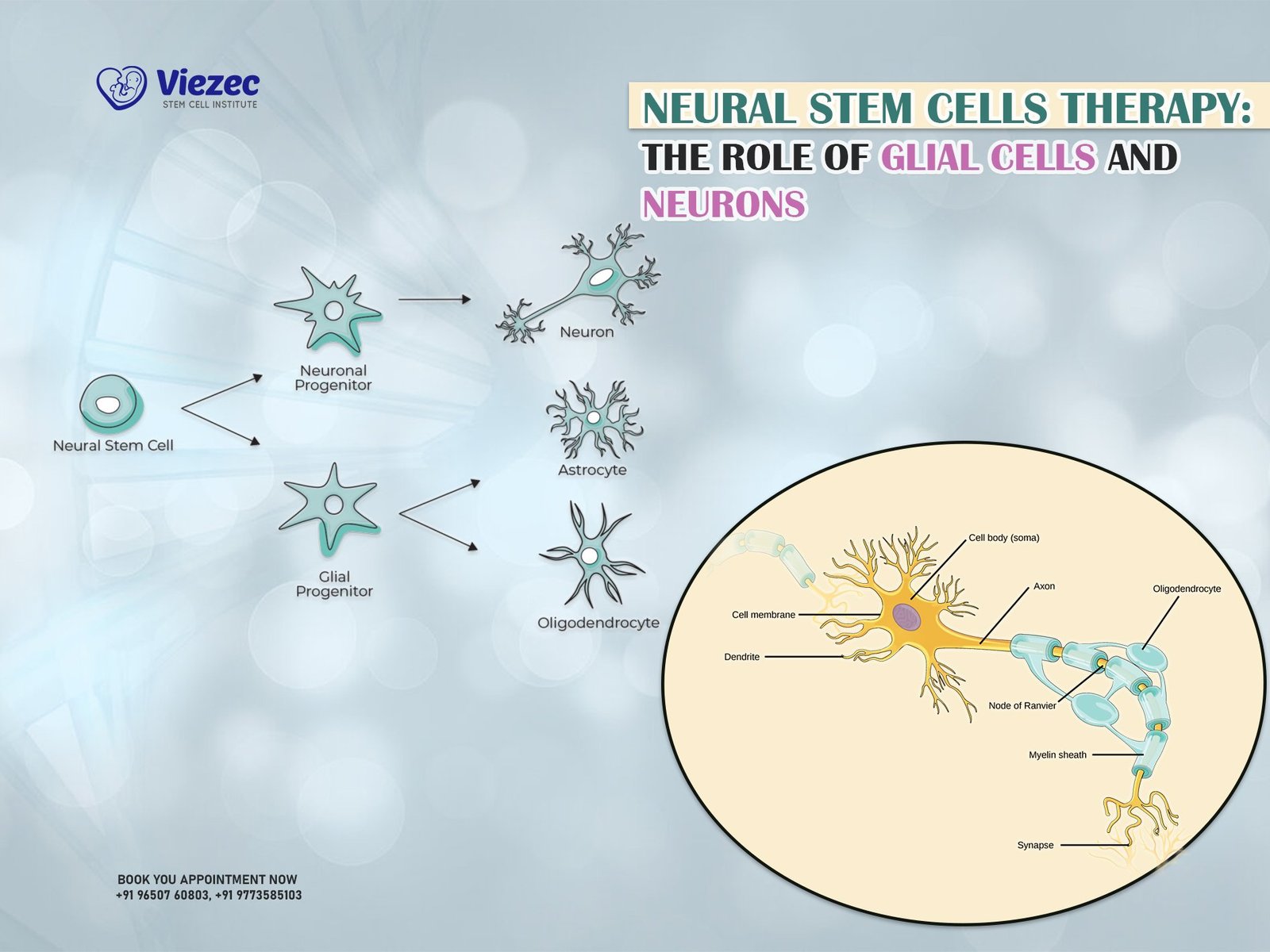Tinnitus, often described as a persistent ringing, buzzing, or hissing sound in the ears, affects millions worldwide. It can be subjective, audible only to the individual, or objective, detectable by an observer. Subjective tinnitus is more common and stems from dysfunctions in the auditory system.
Prevalence and Impact of Tinnitus
Tinnitus prevalence varies across demographics, with older adults and individuals with hearing loss being more susceptible. Its impact extends beyond audiological discomfort, affecting sleep, concentration, and mental health. The subjective nature of tinnitus poses diagnostic and treatment challenges.
Current Treatment Challenges
Existing treatments for tinnitus primarily focus on symptom management rather than addressing its underlying mechanisms. Therapies range from sound masking and cognitive behavioral techniques to medication and surgery, often yielding limited success. This highlights the need for innovative approaches like stem cell therapy.
Science Behind Stem Cells
A. Basics of Stem Cell Biology
Stem cells are undifferentiated cells capable of self-renewal and differentiation into various cell types. They exist in embryonic, fetal, and adult tissues, with distinct properties and potential applications. Understanding their biology is crucial for harnessing their regenerative capacities in therapeutic interventions.
B. Types of Stem Cells Relevant to Tinnitus
- Embryonic Stem Cells (ESC): Derived from early-stage embryos, ESCs possess pluripotent capabilities, making them versatile for tissue regeneration but ethically contentious due to their origin.
- Adult Stem Cells: Found in specialized niches within adult tissues, adult stem cells contribute to tissue maintenance and repair. They offer a more ethical and readily available source for therapeutic use.
- Induced Pluripotent Stem Cells (iPSCs): Generated by reprogramming adult cells to an embryonic-like state, iPSCs combine the advantages of ESCs with ethical considerations and patient-specific applications.
C. Mechanisms of Stem Cell Therapy
Stem cell therapy holds promise for tinnitus management through various mechanisms, including cellular replacement, trophic support, and modulation of inflammation and immune responses. These mechanisms target the underlying pathophysiology of tinnitus, offering a holistic approach to treatment.
Ready to Take the Next Step in Your Recovery?
Explore the benefits of stem cell therapy for tinnitus with expert care at Viezec.
Stem Cell Therapy: A Promising Approach for Tinnitus
Rationale for Stem Cell Use in Tinnitus
The multifactorial etiology of tinnitus, involving auditory, neural, and inflammatory pathways, underscores the need for a comprehensive therapeutic strategy. Stem cells offer a regenerative solution by repairing damaged auditory structures, modulating neuronal activity, and restoring immune homeostasis.
Preclinical Studies and Animal Models
Preclinical research has demonstrated the efficacy of stem cell therapy in mitigating tinnitus-related symptoms in animal models. Studies have shown improvements in auditory function, reduction of neuroinflammation, and regeneration of sensory hair cells following stem cell administration, laying the foundation for clinical translation.
- Regeneration of Auditory Hair CellsStem cells possess the potential to differentiate into hair cell-like phenotypes, replenishing lost sensory cells in the cochlea. This regenerative capacity holds promise for restoring auditory function and alleviating tinnitus symptoms associated with hair cell degeneration.
- Reduction of NeuroinflammationTinnitus pathogenesis involves neuroinflammatory processes characterized by glial activation and cytokine release. Stem cells exert anti-inflammatory effects by modulating microglial activity, attenuating neuroinflammation, and promoting neural repair in the auditory pathway.
Clinical Trials and Human Studies
The transition from preclinical to clinical studies signifies a critical step in evaluating the safety and efficacy of stem cell therapy in human subjects. Clinical trials aim to assess the feasibility, tolerability, and therapeutic potential of stem cell-based interventions in tinnitus patients, providing valuable insights into their real-world application.
- Safety and FeasibilityEarly-phase clinical trials prioritize safety assessments to mitigate potential risks associated with stem cell transplantation. Parameters such as cell dosage, administration route, and immune compatibility are carefully monitored to ensure patient well-being and treatment efficacy.
- Efficacy and Long-Term OutcomesWhile initial results from clinical trials are promising, long-term follow-up is essential to evaluate the durability of treatment effects and identify factors influencing therapeutic response. Patient-reported outcomes, audiometric measurements, and neuroimaging techniques provide comprehensive assessments of treatment efficacy and functional outcomes.
Challenges and Limitations
A. Immune Response and Rejection
Stem cell transplantation may elicit immune responses, leading to graft rejection or inflammatory reactions. Strategies to mitigate immune-mediated rejection include immunosuppressive regimens, genetic engineering of stem cells, and the use of immunomodulatory agents to promote immune tolerance and graft integration.
B. Ethical Considerations
The ethical implications of stem cell research encompass issues of embryo destruction, informed consent, and equitable access to treatment. Balancing scientific progress with ethical principles requires transparent governance frameworks, stakeholder engagement, and adherence to established ethical guidelines in clinical practice.
C. Regulatory Hurdles and Approval Processes
Navigating regulatory pathways for stem cell therapy poses challenges related to safety, efficacy, and manufacturing standards. Regulatory agencies such as the FDA oversee the approval and post-market surveillance of stem cell-based products, ensuring compliance with rigorous regulatory requirements and ethical standards.
Optimizing Stem Cell Therapy for Tinnitus Management
Stem Cell Sources and Selection Criteria
Choosing the appropriate stem cell source is crucial for optimizing treatment outcomes and minimizing associated risks. Factors such as cell potency, proliferation capacity, and immunogenicity influence stem cell selection, with considerations for patient-specific characteristics and disease context.
Delivery Methods and Targeted Localization
Effective delivery strategies enhance the therapeutic efficacy and specificity of stem cell-based interventions for tinnitus. Intravenous administration allows systemic distribution of stem cells, while intratympanic injection enables targeted delivery to the cochlea, optimizing therapeutic concentrations at the site of injury.
- Intravenous AdministrationSystemic delivery of stem cells via intravenous infusion offers a minimally invasive approach for widespread distribution and systemic effects. However, challenges such as cell homing and engraftment efficiency limit its efficacy in targeting specific auditory structures.
- Intratympanic InjectionDirect injection of stem cells into the middle ear delivers high concentrations of cells to the cochlea, bypassing systemic barriers and enhancing local bioavailability. This targeted approach maximizes therapeutic efficacy while minimizing off-target effects and systemic complications.
Combination Therapies and Adjuvant Approaches
Synergistic combinations of stem cell therapy with adjunctive interventions amplify therapeutic outcomes and address diverse aspects of tinnitus pathophysiology. Strategies such as co-administration of growth factors, biomaterial scaffolds, and neurotrophic support enhance stem cell survival, differentiation, and integration within the auditory system.
Future Directions and Innovations
Advancements in Stem Cell Technology
Ongoing research endeavors aim to refine stem cell-based therapies through advancements in cell engineering, 3D bioprinting, and gene editing techniques. Innovations in stem cell delivery systems, such as nanocarriers and tissue-specific scaffolds, offer precise control over cell localization and therapeutic release kinetics.
Personalized Medicine Approaches
The emergence of personalized medicine tailors treatment strategies to individual patient profiles, optimizing therapeutic outcomes and minimizing adverse effects. Patient-specific stem cell therapies, guided by genetic profiling and disease biomarkers, enable customized interventions that address unique pathophysiological mechanisms underlying tinnitus.
Integration with Neural Interfaces and Biofeedback
Combining stem cell therapy with neural interfaces and biofeedback technologies enhances treatment efficacy and patient engagement. Neurostimulation devices, cochlear implants, and neurofeedback training synergize with stem cell-mediated repair mechanisms, promoting neural plasticity and functional recovery in tinnitus patients.
Have Questions About Stem Cell Therapy?
Our medical experts are here to provide clarity and help you decide what’s right for you.
Ethical and Societal Implications
A. Accessibility and Affordability
Ensuring equitable access to stem cell therapy requires addressing barriers related to cost, reimbursement, and healthcare disparities. Strategies for improving affordability include healthcare financing models, insurance coverage expansion, and public-private partnerships that prioritize patient accessibility and socioeconomic equity.
B. Patient Education and Informed Consent
Empowering patients with accurate information and shared decision-making fosters informed consent and autonomy in healthcare decision-making. Educational initiatives promote awareness of stem cell therapy risks, benefits, and alternative treatments, facilitating meaningful patient-provider discussions and treatment decisions aligned with patient preferences.
Collaborative Initiatives and Multidisciplinary Research
A. Interdisciplinary Research Teams
Collaborative efforts among scientists, clinicians, engineers, and ethicists drive innovation in stem cell therapy for tinnitus. Interdisciplinary research teams leverage diverse expertise and perspectives to address complex scientific challenges, accelerate translational research, and foster synergistic collaborations across disciplines.
B. Industry Partnerships and Funding Opportunities
Industry partnerships play a pivotal role in advancing stem cell-based therapies from bench to bedside. Collaborations with biotechnology companies, pharmaceutical firms, and medical device manufacturers facilitate technology transfer, scale-up production, and commercialization of stem cell products, bolstering investment and innovation in tinnitus treatment.
C. Global Collaborations and Knowledge Sharing
International collaboration and knowledge exchange promote scientific progress and harmonization of regulatory standards in stem cell research. Platforms for data sharing, consortia formation, and collaborative networks facilitate cross-border research initiatives, accelerating the pace of discovery and dissemination of best practices in tinnitus management.
Case Studies and Patient Perspectives
Real-Life Experiences with Stem Cell Therapy
Patient testimonials provide valuable insights into the lived experiences and treatment outcomes associated with stem cell therapy for tinnitus. Case studies document individual journeys, treatment responses, and quality of life improvements following stem cell intervention, offering tangible evidence of its clinical efficacy and impact on patient well-being.
Quality of Life Improvements and Functional Outcomes
Assessing treatment success extends beyond clinical endpoints to encompass patient-reported outcomes and subjective measures of well-being. Improvement in tinnitus severity, functional hearing, and psychosocial functioning reflects the holistic benefits of stem cell therapy in enhancing quality of life and restoring auditory function in affected individuals.
Challenges and Lessons Learned
Navigating the complexities of stem cell therapy implementation reveals challenges, setbacks, and opportunities for optimization. Lessons learned from clinical experiences inform future research directions, protocol refinements, and healthcare policy decisions, driving continuous improvement and innovation in tinnitus management.
Safety and Regulatory Frameworks
FDA Regulations and Clinical Trial Guidelines
Regulatory oversight by agencies such as the FDA ensures the safety, efficacy, and quality of stem cell-based products for clinical use. Compliance with Good Manufacturing Practices (GMP), Investigational New Drug (IND) applications, and Phase I-III clinical trial protocols facilitates regulatory approval and market authorization, safeguarding patient welfare and treatment integrity.
International Standards and Harmonization Efforts
Global harmonization of regulatory standards promotes consistency and interoperability in stem cell research and clinical practice. Alignment with international guidelines, such as the International Society for Stem Cell Research (ISSCR) and World Health Organization (WHO) recommendations, facilitates regulatory convergence, data sharing, and mutual recognition of scientific evidence across jurisdictions.
Post-Market Surveillance and Long-Term Monitoring
Post-market surveillance programs monitor the safety and effectiveness of stem cell therapies in real-world settings, complementing pre-market clinical trials. Long-term monitoring of patient outcomes, adverse events, and product performance enables early detection of safety concerns, refinement of treatment protocols, and evidence-based decision-making in healthcare policy and practice.
Discover a New Hope for Tinnitus Relief
Stem cell therapy may hold the key to restoring your hearing health. Start your journey today.
Cost-Benefit Analysis and Economic Considerations
A. Healthcare Resource Allocation
Assessing the economic impact of stem cell therapy informs healthcare resource allocation and budgetary planning. Cost-benefit analyses evaluate the economic efficiency of stem cell interventions relative to conventional treatments, considering factors such as direct medical costs, indirect societal costs, and long-term healthcare savings associated with improved patient outcomes.
B. Cost-Effectiveness of Stem Cell Therapy
Balancing the costs and benefits of stem cell therapy requires weighing upfront investment against long-term health gains and societal returns. Economic evaluations quantify the cost-effectiveness of stem cell interventions in terms of quality-adjusted life years (QALYs) gained, disability-adjusted life years (DALYs) averted, and incremental cost-effectiveness ratios (ICERs), guiding healthcare decision-making and reimbursement policies.
C. Insurance Coverage and Reimbursement Policies
Ensuring insurance coverage and reimbursement for stem cell therapy enhances patient access and affordability. Collaboration between healthcare payers, providers, and policymakers streamlines reimbursement processes, establishes coding and billing mechanisms, and facilitates evidence-based coverage decisions that align with patient needs, treatment efficacy, and healthcare value.
Educational Outreach and Public Awareness
Dissemination of Accurate Information
Educational initiatives promote public awareness of stem cell therapy advancements, safety considerations, and treatment options for tinnitus. Dissemination of accurate information through multimedia platforms, educational resources, and community outreach programs empowers patients, caregivers, and healthcare professionals to make informed decisions and participate in shared decision-making processes.
Community Engagement and Advocacy Efforts
Engaging stakeholders in dialogue fosters community support, advocacy, and policy development in stem cell research and healthcare delivery. Patient advocacy groups, professional societies, and grassroots organizations play a vital role in raising awareness, shaping public discourse, and advocating for equitable access to innovative therapies that address unmet medical needs.
Media Representation and Science Communication
Responsible media coverage and science communication uphold accuracy, transparency, and ethical standards in reporting stem cell research and clinical developments. Collaboration between journalists, scientists, and communication experts promotes balanced narratives, fosters public trust, and counters misinformation, empowering individuals to make informed choices about their health and well-being.
Cognitive and Emotional Aspects of Tinnitus Management
A. Psychological Impact of Tinnitus
Tinnitus exerts profound psychological effects, contributing to anxiety, depression, and diminished quality of life. Integrating psychosocial support services, counseling, and mental health interventions into tinnitus management addresses emotional well-being, enhances coping strategies, and improves treatment adherence and patient outcomes.
B. Cognitive Behavioral Therapy (CBT) Integration
Cognitive behavioral therapy (CBT) offers effective strategies for managing tinnitus-related distress and maladaptive coping behaviors. CBT interventions target cognitive restructuring, relaxation techniques, and habituation training to modulate perceptual responses, reduce symptom severity, and enhance psychological resilience in individuals with chronic tinnitus.
C. Addressing Anxiety and Depression in Tinnitus Patients
Comprehensive tinnitus care encompasses screening, assessment, and treatment of comorbid anxiety and depression. Collaborative care models involving multidisciplinary teams integrate psychiatric interventions, pharmacotherapy, and behavioral therapies to address underlying mood disorders, improve coping skills, and optimize holistic outcomes in tinnitus patients with coexisting mental health conditions.
Biomaterials and Scaffold Engineering for Stem Cell Applications
Biomaterial Design Considerations
Biomaterials play a critical role in supporting stem cell survival, proliferation, and differentiation within the auditory microenvironment. Scaffold design considerations include biocompatibility, biodegradability, mechanical properties, and biochemical cues that mimic the native extracellular matrix, promoting cell adhesion, migration, and tissue regeneration.
Scaffold Fabrication Techniques
Advanced manufacturing techniques enable precise control over scaffold architecture, porosity, and surface topography for tailored stem cell delivery. 3D printing, electrospinning, and microfluidic technologies offer customizable scaffold fabrication platforms that accommodate diverse cell types, spatial gradients, and release kinetics, optimizing therapeutic efficacy and tissue integration.
Scaffold Functionalization for Enhanced Integration
Functionalization of scaffolds with bioactive molecules, growth factors, and extracellular matrix components enhances stem cell behavior and tissue regeneration. Surface modifications, such as peptide conjugation, growth factor immobilization, and nanoparticle incorporation, modulate cell-scaffold interactions, signaling pathways, and tissue-specific differentiation, promoting functional integration of transplanted cells within the host tissue microenvironment.
Towards a Paradigm Shift in Tinnitus Management
Summary of Key Findings and Insights
Stem cell therapy represents a paradigm shift in tinnitus management, offering regenerative solutions that target underlying pathophysiological mechanisms and restore auditory function. From preclinical research to clinical translation, advancements in stem cell technology hold promise for transforming tinnitus care and improving patient outcomes.
Call to Action for Continued Research and Innovation
As we navigate the frontier of stem cell therapy in tinnitus management, a collective commitment to research excellence, ethical integrity, and patient-centric care is paramount. By harnessing the full potential of stem cells and embracing collaborative partnerships, we can usher in a new era of personalized, regenerative medicine that transforms the lives of individuals living with tinnitus.

